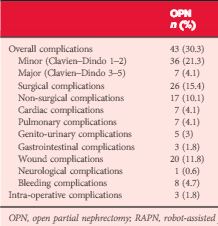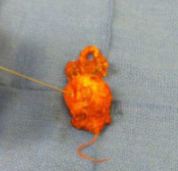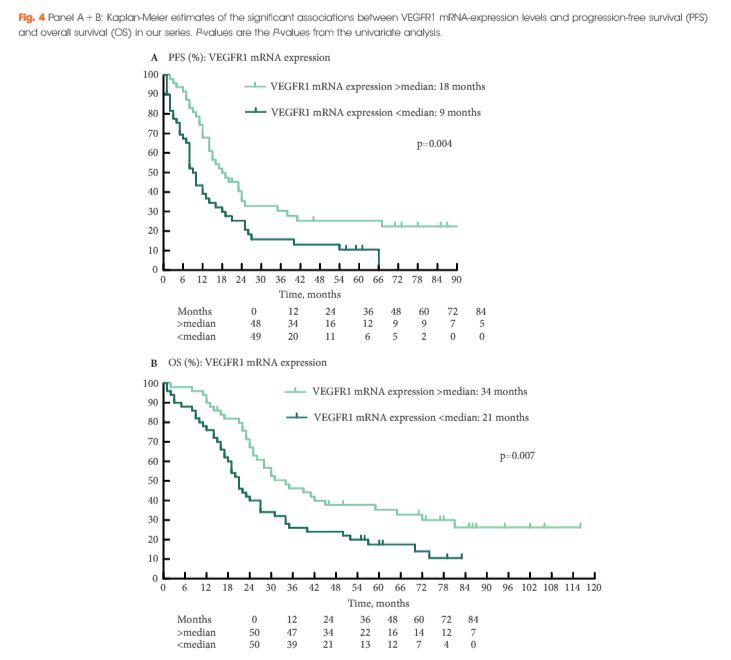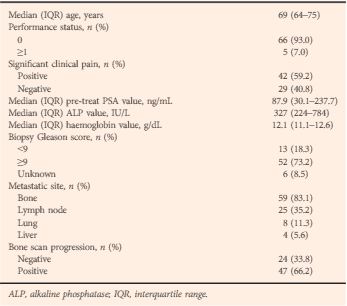
Editorial: Circulating biomarkers of NEPC – an unmet challenge
Prostate cancer is a global health issue and, although the overwhelming majority (>95%) of metastatic castration-resistant prostate cancers (CRPCs) have adenocarcinoma histology [1], a subset of tumours acquire histopathological and immunohistochemical evidence of neuroendocrine differentiation, with a variety of morphological classifications being reported [1]. Nonetheless, the term ‘neuroendocrine prostate cancer’ (NEPC) should be reserved for tumours with absent or minimal androgen-signalling…

Article of the Week: Predicting complications in partial nephrectomy for T1a tumours: does approach matter?
1 Comment
/
Every Week the Editor-in-Chief selects an Article of the Week from the current issue of BJUI. The abstract is reproduced below and you can click on the button to read the full article, which is freely available to all readers for at least 30 days from the time of this post.
In addition to the article itself, there is an accompanying editorial written by a prominent member of the urological community. This blog is intended to provoke comment and discussion and we invite you to use the comment…

Editorial: Open partial nephrectomy is still alive
In this issue of BJUI, Ramirez et al. [1] assess the peri-operative outcomes of patients with small renal tumours treated with robot-assisted or open partial nephrectomy [1]. Their study retrospectively compared transperitoneal robot-assisted partial nephrectomy (RAPN) and retroperitoneal open partial nephrectomy (OPN) in a series of 714 patients (545 RAPN and 169 OPN) with cT1a parenchymal tumours of the kidney. Although the RAPN group had a higher mean RENAL nephrometry score, the authors…

Article of the Week: Detecting PSMs – using LRS on ex vivo RP specimens
Every Week the Editor-in-Chief selects an Article of the Week from the current issue of BJUI. The abstract is reproduced below and you can click on the button to read the full article, which is freely available to all readers for at least 30 days from the time of this post.
In addition to the article itself, there is an accompanying editorial written by a prominent member of the urological community. This blog is intended to provoke comment and discussion and we invite you to use the comment…

Editorial: Light reflectance spectroscopy is one more emerging technique with the potential to adjust excision limits during radical prostatectomy
In this issue of BJUI, Lay et al. [1] report that light reflectance spectroscopy (LRS) can detect Gleason ≥7 positive surgical margins (PSMs) with 92.5% accuracy. In this initial study, the authors have reported the use of LRS in an ex situ setting to analyse the prostate surface; however, this technology could ultimately be developed to identify PSMs before choosing the surgical plane of dissection, which could allow the surgeon to immediately perform a wider complementary excision.
As…

Article of the Week: VEGFR1 rs9582036 as a predictive biomarker in m-ccRCC patients treated with sunitinib
Every Week the Editor-in-Chief selects an Article of the Week from the current issue of BJUI. The abstract is reproduced below and you can click on the button to read the full article, which is freely available to all readers for at least 30 days from the time of this post.
In addition to the article itself, there is an accompanying editorial written by a prominent member of the urological community. This blog is intended to provoke comment and discussion and we invite you to use the comment…

Editorial: SNP of the VEGFR – a promising biomarker in mRCC
Despite earlier detection of localised renal tumours, the resultant tumour down-staging, and an ever-increasing armamentarium of systemic therapies available for metastatic RCC (mRCC), population-level RCC mortality data has failed to show significant improvement in survival. The increasing understanding of RCC biology, specifically the tyrosine kinase signalling pathway, has sparked the development and USA Food and Drug Administration (FDA)-approval of four tyrosine kinase inhibitors (TKIs)…

Video: VEGFR1 rs9582036 as a predictive biomarker in m-ccRCC patients treated with sunitinib
Validation of VEGFR1 rs9582036 as predictive biomarker in metastatic clear-cell renal cell carcinoma patients treated with sunitinib
Benoit Beuselinck*,†,‡, Johnny Jean-Baptiste*,†, Patrick Schoffski‡, Gabrielle Couchy*,†, Clement Meiller*,†, Frederic Rolland§, Yves Allory¶, Steven Joniau**, Virginie Verkarre††, Reza Elaidi‡‡, Evelyne Lerut§§, Tania Roskams§§, Jean-Jacques Patard¶¶, Stephane Oudard†,‡‡, Arnaud Mejean***, Diether Lambrechts†††,‡‡‡ and Jessica…

Article of the Week: Co-introduction of a steroid with docetaxel chemotherapy for metastatic castration-resistant PCa affects PSA flare
Every Week the Editor-in-Chief selects an Article of the Week from the current issue of BJUI. The abstract is reproduced below and you can click on the button to read the full article, which is freely available to all readers for at least 30 days from the time of this post.
In addition to the article itself, there is an accompanying editorial written by a prominent member of the urological community. This blog is intended to provoke comment and discussion and we invite you to use the comment…

Editorial: What is behind the flare phenomenon?
In the present issue of BJUI, Shiota et al. [1] propose a potential explanation for the PSA ‘flare’ observed in many patients as they initiate docetaxel chemotherapy. The PSA flare or ‘surge’ phenomenon has been noted for years, and may affect up to one-fifth of patients treated with docetaxel. Multiple reviews have concluded that the development of flare does not influence disease-specific outcomes [2, 3], which is further supported by the present paper [1]. However, there are no pragmatic…
